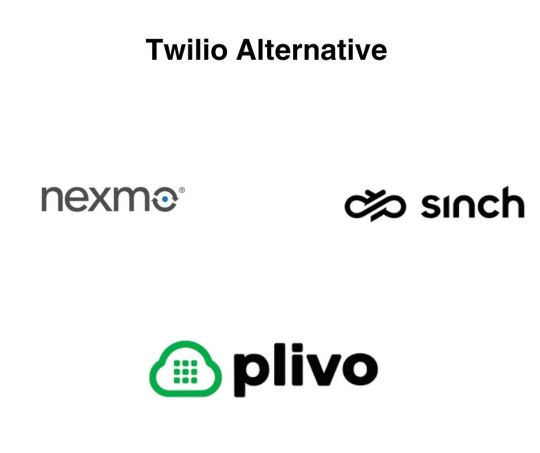#Cloud Communications Platform
Explore tagged Tumblr posts
Text
Unlocking Business Potential with CPaaS Solutions: A Comprehensive Guide
Communication Platform as a Service (CPaaS) solutions have emerged as a pivotal tool for businesses aiming to streamline communication processes, enhance customer engagement, and drive operational efficiency. In today's fast-paced digital landscape, where seamless interaction is crucial for success, white label CPaaS solutions offer a versatile suite of communication tools that can be integrated into existing applications and workflows. This comprehensive guide delves into the key components, benefits, and implementation strategies of CPaaS solutions, empowering businesses to harness the full potential of this transformative technology.
CPaaS is a Cloud Communications Platform that provides developers with a set of APIs (Application Programming Interfaces) and SDKs to embed real-time communication features into their applications. These features typically include voice calling, video conferencing, SMS messaging, chatbots, and more.
Key Components of CPaaS Solutions:
Communication APIs: CPaaS solutions offer a range of APIs that enable developers to integrate voice, video, and messaging capabilities into their applications seamlessly. These APIs abstract away the complexities of telecommunication protocols, allowing developers to focus on building intuitive user experiences.
SDKs for Popular Platforms: To facilitate rapid development, CPaaS providers offer SDKs for popular programming languages and platforms, such as JavaScript, Python, iOS, and Android. These SDKs come equipped with pre-built components and documentation, simplifying the integration process for developers.
Scalable Infrastructure: Communication platform as a service solution operates on robust cloud infrastructure that can scale dynamically to accommodate fluctuating demand. Whether handling a handful of users or millions of concurrent interactions, CPaaS ensures reliable performance and high availability.
Analytics and Insights: Advanced analytics capabilities built into CPaaS platforms provide valuable insights into communication patterns, user behavior, and performance metrics. Businesses can leverage these insights to optimize their communication strategies and enhance customer engagement.
Benefits of CPaaS Solutions:
Improved Operational Efficiency: CPaaS Software Solutions streamline communication workflows by automating repetitive tasks, such as appointment reminders, customer support inquiries, and transactional notifications. This frees up valuable time and resources, allowing businesses to focus on core operations.
Choose the Right Provider: Evaluate CPaaS providers based on factors such as reliability, scalability, developer experience, and pricing model. Look for providers that offer comprehensive documentation, robust support, and a rich set of features.
CPaaS solutions empower businesses to transform their communication processes, driving customer engagement, operational efficiency, and innovation. By leveraging the key components, benefits, and implementation strategies outlined in this guide, businesses can unlock the full potential of cloud communications platform services and stay ahead in today's digital landscape.
#cloud communications platform services#CPaaS software Solutions#communication platform as a service solution#white label CPaaS solutions#white label CPaaS solutions#white label CPaaS services#Cloud Communications Platform#best CPaaS platforms#cpaas products#cpaas providers#Enterprises cpaas
0 notes
Text
Lazy Loading Page Speed Optimization: Efficient Practices & Tips

Key Takeaways
Lazy loading can significantly improve page speed by loading only necessary content initially, reducing initial load times.
Implementing lazy loading can save bandwidth, which is crucial for users on limited data plans.
This technique enhances user experience by ensuring faster interactions and smoother scrolling.
SEO can benefit from lazy loading as search engines prefer faster websites, potentially improving rankings.
To effectively implement lazy loading, use browser-native features and ensure compatibility across different devices.
Enhancing Web Performance with Lazy Loading
In today's fast-paced digital world, web performance is more critical than ever. Slow websites can drive users away, impacting engagement and conversions. One powerful technique to boost performance is lazy loading. By understanding and implementing lazy loading, you can optimize your website's speed and efficiency, keeping your visitors engaged and satisfied.
Understanding the Need for Speed
Users expect websites to load quickly and efficiently.
Slow loading times can lead to higher bounce rates.
Improved speed enhances user satisfaction and retention.
Most importantly, speed is not just a luxury; it's a necessity. Users are increasingly impatient, and a delay of even a few seconds can cause them to abandon your site. Therefore, ensuring that your site loads swiftly is crucial for maintaining user interest and engagement.
Lazy loading offers a solution by optimizing the loading process. Instead of loading every element of a page at once, lazy loading prioritizes essential content and defers non-essential elements. This approach can make a dramatic difference in how quickly your site feels to users.
Lazy Loading: A Game Changer for Web Efficiency
Lazy loading is more than just a buzzword; it's a transformative technique for web optimization. By deferring the loading of non-essential elements, such as images and videos, until they are needed, lazy loading reduces the initial load time of a webpage.
Images and videos load only when they enter the viewport.
Reduces server requests, enhancing page speed.
Particularly beneficial for mobile users with limited bandwidth.
Besides that, lazy loading helps in conserving resources, which is particularly beneficial for mobile users who might be on limited data plans. By only loading what's necessary, users experience faster interactions and smoother scrolling, which can significantly improve their overall experience.
Eager Loading: When Immediate Isn't Ideal
Eager loading, the opposite of lazy loading, involves loading all page elements at once. While this approach might seem straightforward, it can lead to longer initial load times, especially on content-heavy pages. Therefore, eager loading is not always the best choice, particularly when dealing with large images or videos.
Lazy loading, on the other hand, ensures that your website delivers essential content swiftly, making it an ideal choice for optimizing page speed and improving user experience.
Benefits of Lazy Loading
Lazy loading isn't just about speed; it's about creating a seamless and efficient user experience. Let's delve into the various benefits it offers.
Faster Initial Load Times
By loading only the necessary elements initially, lazy loading significantly reduces the time it takes for a page to become interactive. Users can start engaging with the content almost immediately, without waiting for all elements to load.
This immediate engagement is crucial in retaining user interest. For instance, if your homepage loads quickly, users are more likely to explore further, increasing the chances of conversion.
Additionally, faster load times can have a positive impact on your website's bounce rate. Users are less likely to leave if they don't have to wait for content to load, which can improve your site's overall performance metrics.
Loading Images Efficiently
Images often account for the majority of a webpage's load time. By implementing lazy loading for images, you can significantly improve your page speed. This involves loading images only when they are about to enter the viewport. As a result, users won't have to wait for all images to load before they can interact with your content.
To do this effectively, you can use the loading="lazy" attribute in your image tags. This attribute tells the browser to defer loading the image until it is close to being visible. Additionally, consider using responsive image techniques to serve different image sizes based on the user's device, further optimizing load times.
Handling Videos and Media Content
Videos and other media content can be resource-intensive, causing significant delays in load times if not managed properly. Lazy loading can also be applied to these elements. By embedding videos with lazy loading techniques, you ensure they only load when a user scrolls to them.
For example, instead of directly embedding a video, use a thumbnail image with a play button overlay. When the user clicks the play button, the video loads and plays. This not only saves bandwidth but also improves the initial loading speed of the page.
JavaScript and CSS Deferred Loading
JavaScript and CSS files are essential for modern web applications, but they can also be a bottleneck if not handled correctly. Lazy loading these resources involves deferring their loading until they are needed. This can be achieved using the defer and async attributes for JavaScript files.
The defer attribute ensures that the script is executed after the HTML document has been parsed, while the async attribute allows the script to be executed as soon as it's available. For CSS, consider using media queries to load stylesheets conditionally based on the user's device or viewport size.
Tips for Optimizing Lazy Loading
Implementing lazy loading is just the beginning. To truly optimize your website's performance, follow these additional tips and best practices.
Use Browser Native Features
Modern browsers offer native support for lazy loading, making it easier than ever to implement this technique. By using native features, you can ensure compatibility and reduce the need for third-party libraries, which can add unnecessary overhead.
To take advantage of these features, simply add the loading="lazy" attribute to your image and iframe tags. This simple addition can have a significant impact on your page speed, especially for image-heavy sites.
Besides, using native features ensures that your site remains future-proof, as browsers continue to enhance their support for lazy loading and other performance optimizations.
Minimize Default Image Size
Before applying lazy loading, it's crucial to optimize your images for size. Large images can still slow down load times, even with lazy loading. Use image compression tools to reduce file sizes without sacrificing quality.
Optimize Animations
Animations can enhance user experience, but they can also impact performance if not optimized. Use CSS animations instead of JavaScript whenever possible, as they are more efficient and can be hardware-accelerated by the browser.
Ensure that animations are smooth and don't cause layout shifts, which can negatively affect user experience. Test your animations on different devices to ensure they perform well across the board.
Remember, the goal is to create a seamless experience for your users. By optimizing animations, you can enhance the visual appeal of your site without compromising performance.
Test Across Multiple Devices
It's essential to test your website on a variety of devices and screen sizes. What works well on a desktop might not perform the same on a mobile device. Use tools like Google PageSpeed Insights to analyze your site's performance and identify areas for improvement.
Regular testing ensures that your lazy loading implementation works as intended across different platforms, providing a consistent experience for all users.
Overcoming Common Lazy Loading Challenges
While lazy loading offers numerous benefits, it's not without its challenges. Addressing these issues ensures that your implementation is successful and doesn't negatively impact your site.
Dealing with SEO Concerns
Lazy loading can sometimes interfere with search engine indexing if not implemented correctly. To ensure your content is indexed, use server-side rendering or provide fallbacks for search engines that may not execute JavaScript. For more insights, check out how lazy loading decreases load time and increases engagement.
Ensure all critical content is available without JavaScript.
Use structured data to help search engines understand your content.
Regularly monitor your site's indexing status in Google Search Console.
These strategies help maintain your site's visibility in search engine results, ensuring that lazy loading doesn't negatively impact your SEO efforts.
Addressing Browser Compatibility Issues
While most modern browsers support lazy loading, some older versions may not. To ensure compatibility, consider using a polyfill or fallback solutions for browsers that don't support lazy loading natively.
By addressing these compatibility issues, you can provide a consistent experience for all users, regardless of their browser choice. Regularly updating your site and testing on different browsers can help you identify and resolve any issues that arise.
Troubleshooting Loading Delays
Even with lazy loading implemented, you might encounter loading delays. This often happens when elements are not optimized or when there are too many third-party scripts running on your site. To troubleshoot these issues, start by identifying the elements that are causing delays. Use tools like Google Chrome's Developer Tools to pinpoint these elements and analyze their loading times.
Once you've identified the culprits, consider compressing images, deferring non-essential scripts, and minimizing the use of third-party plugins. By doing so, you can significantly reduce loading times and improve the overall performance of your website.
The Future of Lazy Loading in Web Development
Lazy loading is set to become an integral part of web development as websites continue to grow in complexity and size. With the increasing demand for faster and more efficient websites, lazy loading offers a practical solution to enhance user experience without compromising on content richness.
"Lazy loading is not just a trend; it's a necessity for modern web development. As websites evolve, so do the techniques we use to optimize them."
As more developers recognize the benefits of lazy loading, we can expect to see advancements in browser support and new tools that make implementation even easier. This evolution will ensure that lazy loading remains a vital component of web optimization strategies.
Emerging Technologies that Support Lazy Loading
Several emerging technologies are poised to enhance lazy loading capabilities. For instance, progressive web apps (PWAs) and server-side rendering (SSR) can work alongside lazy loading to deliver content more efficiently. PWAs offer offline capabilities and faster load times, while SSR ensures that content is rendered on the server, reducing the load on the client's device.
Additionally, advances in artificial intelligence and machine learning could further optimize lazy loading by predicting user behavior and preloading content accordingly. These technologies have the potential to revolutionize how we approach web performance optimization.
The Growing Importance of Mobile Optimization
As mobile usage continues to rise, optimizing websites for mobile devices has become more critical than ever. Lazy loading plays a crucial role in this optimization by reducing data usage and improving load times on mobile networks.
By implementing lazy loading, you can ensure that your mobile users have a seamless experience, regardless of their network conditions. This is particularly important for users in regions with slower internet speeds, where every byte counts.
Frequently Asked Questions
Lazy loading is a powerful tool, but it can also raise questions for those unfamiliar with its implementation. Here are some common questions and answers to help you better understand lazy loading and its impact on your website.
These insights will help you make informed decisions about implementing lazy loading on your site and address any concerns you may have.
"Lazy loading can seem daunting at first, but with the right guidance, it becomes an invaluable asset for web optimization."
What is lazy loading and how does it work?
Lazy loading is a technique that defers the loading of non-essential elements, such as images and videos, until they are needed. This reduces the initial load time of a webpage, allowing users to interact with the content more quickly. By only loading elements when they enter the viewport, lazy loading conserves resources and improves performance.
How does lazy loading affect page speed and SEO?
Lazy loading can significantly enhance page speed by reducing the number of elements that need to be loaded initially. This not only improves user experience but also positively impacts SEO. Search engines favor faster websites, which can lead to improved rankings.
However, it's essential to ensure that lazy loading is implemented correctly to avoid any negative impact on SEO. This includes providing fallbacks for search engines that may not execute JavaScript and ensuring that all critical content is accessible without JavaScript. For more insights, check out this beginner's guide to lazy loading.
By addressing these considerations, you can harness the benefits of lazy loading without compromising your site's visibility in search engine results.
"Faster websites are favored by both users and search engines, making lazy loading a win-win for performance and SEO."
Therefore, lazy loading is an effective strategy for enhancing both user experience and search engine rankings.
What types of content should be lazy loaded?
Lazy loading is particularly beneficial for large images, videos, and other media content that can slow down a webpage. By deferring these elements, you can ensure that users only load what they need, when they need it.
Additionally, lazy loading can be applied to JavaScript and CSS files, further optimizing load times. By prioritizing essential content and deferring non-essential elements, you can create a more efficient and user-friendly website.
Are there any drawbacks to implementing lazy loading?
While lazy loading offers numerous benefits, it does have some potential drawbacks. If not implemented correctly, it can interfere with search engine indexing and result in missing or delayed content. To mitigate these risks, ensure that your lazy loading implementation is compatible with search engines and provides fallbacks for non-JavaScript environments. For more insights, check out Boost Your Website Speed With Lazy Loading.
How do I verify if lazy loading is working on my site?
To verify that lazy loading is working, use browser developer tools to inspect the network activity. Check if images and other media elements are loading only when they enter the viewport. Additionally, tools like Google PageSpeed Insights can help you analyze your site's performance and confirm that lazy loading is functioning as intended.
By regularly monitoring your site's performance and addressing any issues that arise, you can ensure that lazy loading continues to enhance your website's speed and user experience.
#A/B testing strategies#abstract design#Adobe Sensei automation#affordable AI tools#AI capability experimentation#AI-driven design suggestions#AI-driven innovation#alternate reality game#API integration#Appointment booking#appointment cancellation policy#ARG#authentic partnership#automated resizing#background removal#behind-the-scenes content#Blue color scheme#budget-friendly design software#Canva free version#Canva Pro features#Client data protection#client feedback tools#Client testimonials#Cloud Libraries#community building#community engagement#community engagement platforms#content automation#Conversion tracking#cost-effective strategies
0 notes
Text

Do you know which game avatar is this ? Checkout on https://Gamepodcasts.com and play online games
#Free online games#Best mobile games#PC gaming accessories#Upcoming video games#Gaming laptops under $1000#Top indie games#VR gaming experiences#Cloud gaming services#Esports tournaments 2025#Retro gaming consoles#Game development tutorials#Mobile game monetization#Gaming headset reviews#Speedrunning communities#Game streaming tips#Best RPG games 2025#Gaming chair ergonomics#Cross-platform multiplayer games#Game design courses#Mobile game development tools#Gaming keyboard features#Top gaming podcasts#Indie game funding sources#Game localization services#Gaming industry news#Best co-op games#Game art portfolios#Gaming mouse DPI settings#Video game music composers#Game physics engines
0 notes
Text
#salesforce#salesforce cloud#CRM#CRM platform#customer service#Features of Salesforce#manage customer interactions#Service Cloud#Marketing Cloud#Commerce Cloud#Einstein AI#Analytics Cloud#Community Cloud#Mobile App#Operational Efficiency#Scalability#Security
0 notes
Text
Forecasting Exponential Growth: The Global Cloud Communication Platforms Market 2020-2030
The global cloud communication platform market will experience a double-digit CAGR over the forecast period, 2020-2030. Upsurge in investments in IT infrastructure for cloud service providers (CSPs), internet service providers (ISPs), and hyperscalers have been critical in driving market growth. Further, the coronavirus (COVID-19) pandemic has compelled several organizations to turn to work from home (WFH) model, thereby, resulting in increasing deployment of cloud communication platform solutions.
Digital collaboration tool providers, including Zoom, and Microsoft, are witnessing a remarkable upswing in usage across continents due to lockdowns and stay-at-home orders. Given the shortage of on-site IT personnel, companies are utilizing cloud-based solutions to maintain and monitor their storage, and server installations in data centers. Enterprises are leveraging full potential of cloud to establish resilient and disaster-immune models to satiate the remote workforce, as well as ensure data security and enterprise application integrity.
Request a Sample of this Report: https://www.fmisamplereport.com/sample/rep-gb-3349
“While the COVID-19 pandemic is having a detrimental impact on the global economic order, it is having a mildly positive impact on cloud communication platform market. Although the pandemic is troubling cloud service providers, in uncertain times, the public cloud infrastructure is delivering flexibility and safe house for organizations striving to maintain normal operations” says the FMI study.
Cloud Communication Platform Market – Key Takeaways
The healthcare industry would remain key revenue generator, given rising trend of bring your own device (BYOD), and increasing need for mobility in the industry.
Benefits such as low costs, and greater functionality are bolstering the adoption of Unified communications as a service (UCaaS).
Large enterprises would remain the primary customer of cloud communication platform services.
Market in North America continues its positive trend, backed by increasing adoption of UCaaS and IVR solutions.
Cloud Communication Platform Market – Key Driving Factors
Rising preference for online backup and database solutions has boded well for market.
Increasing shift towards cloud-based unified communication services to push adoption rate.
Swelling demand for high-speed data transfer mediums in developing regions to offer growth potential to market players.
Cloud Communication Platform Market – Key Constraints
Security and privacy risks associated with shared communication networks are restricting widespread adoption.
Redesigning the network for cloud requires high initial cost.
Anticipated Market Impact of Coronavirus Outbreak
The COVID-19 pandemic has hampered the revenue growth of almost every industry, including the cloud communication platform market. Alerted by the situation, several private, and government organizations have transitioned to remote working, thus, translating into swelling adoption of cloud communication platform solutions. In addition, customers are significantly banking on video streaming services as they strictly following self-isolating regulations. Such evolving trends are auguring well for the cloud communication platform market. The Software-as-a-Service (SaaS) market expanded by nearly 1.4X in 2019 and will see a surge in demand amidst the COVID-19 crisis, as remote working becomes the new normal.
Competition Landscape
Key players in the cloud communication platform market are Cisco Systems Inc., IBM Corporation, Microsoft Corporation, Huawei Technologies Co. Ltd., Avaya Inc., Ozonetel Systems Pvt. Ltd., and Dialogic Inc. Players are focusing on collaborations and new service launches in order to expand their presence further during the COVID-19 recession and extend their customer base.
0 notes
Text
Microsoft Outlook and Teams Outage: What Happened and What to Expect

On November 25, 2024, Microsoft services, including Outlook, Teams, and the Microsoft Store, faced widespread disruptions. The outage began early in the morning, with reports surging around 8 AM ET, coinciding with the start of the workday for many users. Microsoft identified the root cause and began rolling out a fix. However, the resolution process has been gradual, with some services still impacted as targeted restarts take longer than anticipated. Microsoft has promised updates as they work toward full restoration.
This outage underscores the challenges of maintaining seamless operations for essential productivity tools, especially as businesses and individuals rely heavily on digital communication platforms. Microsoft advises affected users to monitor their service health dashboards for real-time updates.
For further details, visit sources such as Windows Central and Microsoft’s official channels【10】
read more in google news
Microsoft Outlook and Teams Outage: Detailed Insights
On November 25, 2024, users worldwide reported significant disruptions to key Microsoft services, including Outlook, Teams, and the Microsoft Store. This outage severely impacted businesses and individuals relying on these tools for communication and collaboration. Reports began surfacing as early as 4 AM ET, with a sharp spike at 8 AM ET as the workday commenced. By mid-morning, millions were unable to access emails, schedules, or Teams functionalities.

Timeline of Events
Microsoft began investigating the issue early and identified the problem affecting Exchange Online and Teams’ calendar functionalities. At 9:06 AM ET, the company acknowledged the outage on its Microsoft 365 Status account on X (formerly Twitter), assuring users that a fix was underway. Initial updates indicated progress in deploying patches, but the restoration process proved slower than expected. As of midday, manual restarts for affected servers were still ongoing, leaving many without full access.
read more in google news
What Caused the Outage?
While Microsoft has not publicly disclosed technical specifics, the incident underscores the complexity of managing cloud-based services at scale. Early reports suggest server configurations or software updates might have triggered the disruptions. Microsoft’s gradual rollout strategy aims to minimize broader impacts, ensuring stability during restoration.
Global Impact
The outage hit hard in regions where Microsoft 365 services are vital for productivity, including North America and Europe. Businesses dependent on Outlook for email and Teams for virtual meetings experienced delays and cancellations, forcing many to revert to alternative tools or communication methods.
Current Status
By late evening on November 25, Microsoft reported that its fix had reached 98% of affected environments. However, isolated issues persist, with Microsoft advising users to check the admin center for updates under the case number MO941162. Full restoration is expected soon, though no exact timeline has been provided.
read more in google news
Lessons and Considerations
This outage highlights the growing dependence on cloud services and the need for contingency planning. Organizations should evaluate backup communication tools and ensure staff are prepared for sudden disruptions.
For updates, users are encouraged to monitor Microsoft’s service dashboards and official communication channels. As the situation evolves, Microsoft’s response will likely shape customer trust and future service reliability.
#Microsoft Outlook and Teams Outage: What Happened and What to Expect#Microsoft outage#Outlook downtime#Microsoft Teams not working#Microsoft 365 disruption#Exchange Online issue#Teams calendar error#Service restoration update#Cloud service outage#Microsoft 365 fix#Business productivity tools#Email access problems#Microsoft admin center#Global IT outages#Communication platform disruption#Microsoft Status update#Manual server restarts#Enterprise collaboration tools#Cloud service reliability#IT contingency planning#Microsoft service health dashboard
0 notes
Text
Lack of Success in the AWS Data Engineer Job Market
Wow! Talk about disappointment, the job market is definitely tough right now for AWS Data Engineers. Or, Data Engineers overall. The oddest part though, ~85% of the emails/calls I receive, they are for Senior or Lead Data Engineer and/or Data Scientist roles. When I am trying to break in at the mid-level Data Engineer role because I know I do not yet have the Senior level experience yet. But…
#acloudguru#aws certified data engineer#aws cloud#aws machine learning specialist#aws ml specialist#cloudacademy#cognitive diversity#communication skills#data engineer#data engineering essentials#diplomacy skills#drive#drive and sacrifice#gcp pro data engineer#google cloud platform data engineer#sacrifice
0 notes
Text
How Many Gamers Use macOS?
While macOS is traditionally associated with creative professionals and productivity enthusiasts, its appeal among gamers has grown over the years. Despite the dominance of Windows in the gaming world, macOS has carved out a niche. But just how many gamers are using macOS today? Recent statistics reveal that approximately 9.8% of gamers use macOS. This figure reflects a slight increase from…

View On WordPress
#Apple EcoSystem#Apple gaming#Apple hardware#Apple platform#Apple Silicon#Apple Silicon gaming#cloud gaming#cloud services#cross-platform play#Epic Games Store#game availability#game optimization#game streaming#gaming advancements#gaming appeal#gaming challenges#gaming community#gaming ecosystem#gaming experience#gaming future#gaming growth#gaming hardware#gaming industry#gaming market#gaming niche#gaming on Mac#gaming peripherals#gaming software#gaming stats#gaming support
0 notes
Text
Top Tools and Services That Improve Productivity in the Workplace
In today’s fast-paced business environment, enhancing workplace productivity is paramount for sustained growth and success. Employers and team leaders are on a constant lookout for tools and services that can streamline operations and facilitate better project management. From cloud-based platforms to automated software, there are myriad options available that cater to various business needs. In…

View On WordPress
#automation software#communication tools#document sharing services#free online cloud storage#productivity in the workplace#project management platforms#time tracking management tools
0 notes
Text
The Evolution of Communication with CPaaS Software
In today's fast-paced digital landscape, effective communication is not just a necessity; it's a competitive advantage. As businesses strive to stay connected with customers, employees, and partners across various channels, the role of The Evolution of Communication with CPaaS Software as a Service (CPaaS) providers has become increasingly vital.
CPaaS providers offer a suite of tools and APIs that enable businesses to integrate real-time communication features such as voice, video, and messaging into their existing applications and workflows. This flexibility empowers enterprises to build customized communication solutions tailored to their specific needs.
One of the key advantages of CPaaS is its ability to adapt and evolve alongside technological advancements. Traditional communication methods, such as phone calls and emails, are being complemented—and in some cases, replaced—by more dynamic and interactive channels. CPaaS solutions facilitate this transition by providing access to cutting-edge technologies like WebRTC (Web Real-Time Communication), enabling seamless video conferencing and in-browser voice calls.
Furthermore, the emergence of white label CPaaS providers has democratized access to these communication tools, particularly for smaller businesses and startups. White label solutions allow businesses to brand the communication platform as their own, providing a seamless experience for end-users while minimizing development costs and time-to-market.
Cloud Communications Platforms have also played a significant role in the evolution of CPaaS. By leveraging the scalability and reliability of cloud infrastructure, Voxvalley CPaaS providers can deliver high-quality communication services on a global scale. This ensures that enterprises can maintain consistent and uninterrupted communication with their stakeholders, regardless of geographical location.
Enterprises are increasingly turning to CPaaS software Solutions to enhance customer engagement, streamline internal communication, and drive operational efficiency. By leveraging the capabilities of CPaaS, businesses can create personalized experiences for their customers, automate routine tasks through chatbots, and enable collaboration among remote teams.
In conclusion, the evolution of communication with CPaaS software represents a paradigm shift in how businesses interact with their stakeholders. As communication continues to evolve, CPaaS providers will play a central role in enabling enterprises to adapt to changing market dynamics and stay ahead of the curve.
#Cloud communications platform services#CPaaS software Solutions#Communication platform as a service providers#white label CPaaS providers#white label CPaaS solutions#white label CPaaS services#Cloud Communications Platform#best CPaaS platforms#cpaas products#cpaas providers#Enterprises cpaas
0 notes
Text

Twilio, a leading cloud communications platform that assist in empowering businesses with APIs for voice, messaging, video and more more. With the help of this automated cloud communication platform, you can drive a seamless customer engagement and generate a great brand building of your product and services.
However, for those who are seeking for a adoptable Twilio alternative, platforms like Nexmo, Plivo, and Sinch offer similar capabilities at affordable prices.
Nexmo boasts global reach and robust APIs, while Plivo provides scalable voice and messaging services. Sinch offers omnichannel communication tools with innovative and incredible features.
Evaluating these twilio alternatives allow businesses to tailor their communication strategies effectively in very less timing. Whether it's API reliability, pricing flexibility, or feature richness, exploring Twilio alternatives ensures businesses find the right fit for their communication needs, fostering enhanced customer experiences and operational efficiency.
0 notes
Text

Implementing a Unified Communication System in a hotel phone system streamlines guest services, enhances staff efficiency, and improves the establishment of various communication services using a single interface. Learn More....
#unified communications#cloud technology#voip#cloud solution#voiceware by phonesuite#hotel phone installation#hotel hospitality#phonesuite pbx#phone systems#hotel pbx#hotel phone system#phonesuite voiceware#ip telephony#SIP Trunks#voiceware express#business phones#cloud Computing#cloud pbx#PBX Solution#Voiceware Platform#mobilevoip#managing a hotel#on premise services#cloud
0 notes
Photo

A Comprehensive Guide about Google Cloud Generative AI Studio https://medium.com/google-cloud/a-comprehensive-guide-about-google-cloud-generative-ai-studio-1b2bafc4108a?source=rss----e52cf94d98af---4
#google-cloud-platform#generative-ai#generative-ai-tools#generative-ai-solution#large-language-models#Rubens Zimbres#Google Cloud - Community - Medium
0 notes
Text
Streamline Fax Communication with Axion Communications' VFAX Solutions
Modern VFAX solutions from Axion Communications will completely transform your fax communication experience. Embrace the comfort of virtual faxing and say goodbye to standard fax machines. We provide a safe and dependable platform for sending and receiving digital faxes through our VFAX service, doing away with the need for paper, ink, and phone lines. Experience how our VFAX system can simplify your document control processes while saving you cost. Join us as we explore the future of fax communication. Visit our website at https://www.axioncommunications.com/vfax/ to discover more about our VFAX services.
1 note
·
View note
Text
Cloud Communication Platforms Revolutionizing Customer Service
Over the projection period of 2020–2030, the global market for cloud communication platforms will register a double-digit CAGR. The expansion of the industry has been greatly aided by the increase in investments made in IT infrastructure by cloud service providers (CSPs), internet service providers (ISPs), and hyperscalers. Additionally, the coronavirus (COVID-19) pandemic has forced a number of businesses to adopt the work from home (WFH) model, which has contributed to an increase in the use of cloud communication platform solutions.
Due to lockdowns and stay-at-home orders, digital collaboration tool providers like Zoom and Microsoft are observing a striking increase in usage across continents. Companies are using cloud-based solutions to maintain and monitor their storage and server installations in data centres due to the lack of on-site IT staff. Enterprises are leveraging full potential of cloud to establish resilient and disaster-immune models to satiate the remote workforce, as well as ensure data security and enterprise application integrity.
Don’t wait for success, unlock it now! Claim your sample report and conquer the wired interface market with exponential growth @ https://www.futuremarketinsights.com/reports/sample/rep-gb-3349
“While the COVID-19 pandemic is having a detrimental impact on the global economic order, it is having a mildly positive impact on cloud communication platform market. Although the pandemic is troubling cloud service providers, in uncertain times, the public cloud infrastructure is delivering flexibility and safe house for organizations striving to maintain normal operations” says the FMI study.
Key Players and Market Share in Global Cloud Communication Platforms Market
The healthcare industry would remain key revenue generator, given rising trend of bring your own device (BYOD), and increasing need for mobility in the industry.
Benefits such as low costs, and greater functionality are bolstering the adoption of Unified communications as a service (UCaaS).
Large enterprises would remain the primary customer of cloud communication platform services.
Market in North America continues its positive trend, backed by increasing adoption of UCaaS and IVR solutions.
Cloud Communication Platform Market – Key Driving Factors
Rising preference for online backup and database solutions has boded well for market.
Increasing shift towards cloud-based unified communication services to push adoption rate.
Swelling demand for high-speed data transfer mediums in developing regions to offer growth potential to market players.
More Info @ https://www.futuremarketinsights.com/reports/cloud-communication-platforms-market
Cloud Communication Platform Market – Key Constraints
Security and privacy risks associated with shared communication networks are restricting widespread adoption.
Redesigning the network for cloud requires high initial cost.
Anticipated Market Impact of Coronavirus Outbreak
The COVID-19 pandemic has hampered the revenue growth of almost every industry, including the cloud communication platform market. Alerted by the situation, several private, and government organizations have transitioned to remote working, thus, translating into swelling adoption of cloud communication platform solutions.
In addition, customers are significantly banking on video streaming services as they strictly following self-isolating regulations. Such evolving trends are auguring well for the cloud communication platform market. The Software-as-a-Service (SaaS) market expanded by nearly 1.4X in 2019 and will see a surge in demand amidst the COVID-19 crisis, as remote working becomes the new normal.
Competition Landscape
Key players in the cloud communication platform market are Cisco Systems Inc., IBM Corporation, Microsoft Corporation, Huawei Technologies Co. Ltd., Avaya Inc., Ozonetel Systems Pvt. Ltd., and Dialogic Inc. Players are focusing on collaborations and new service launches in order to expand their presence further during the COVID-19 recession and extend their customer base.
The global cloud communication platform market is segmented in detail to cover every aspect of the market and present a complete market intelligence approach to readers.
By Solutions
Unified Communication & Collaboration
Web Real-Time Communication (WEBRTC)
Interactive Voice Response (IVR) With Integral EPABX
Audio Conferencing
Video Conferencing
Voice Over Internet Protocol (VoIP) with cloud PBX
By Services
Managed Services
Professional Services
By Enterprise Size
Large Enterprise
Medium Enterprise
Small Enterprise
Micro Enterprise
By verticals
BFSI
Healthcare
Telecomm-unication
Government
Retail
Travel & Hospitality
Manufacturing
Others
By Region
North America
Latin America
Europe
East Asia
South Asia & Pacific
MEA
0 notes
